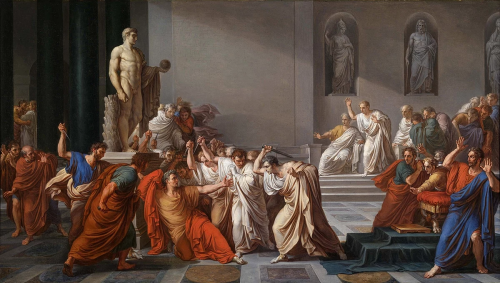
The Ides of March: A Historical and Literary Overview
The Ides of March, a date steeped in history, intrigue, and literary fame, has captivated the imagination of people around the world for centuries. Marked on the 15th of March, it is a day best known for the assassination of Julius Caesar, an event that significantly altered the course of Roman history. This article delves into the history of the Ides of March, its significance in Shakespeare’s literature, and the famous soothsayer scene that has become synonymous with foreboding and prophecy.
History of the Ides of March
The Roman calendar was a complex system that included various markers, such as the Kalends, Nones, and Ides. The Ides occurred in the middle of the month, typically on the 15th for March, May, July, and October, and the 13th for other months. It was originally intended to mark the full moon, reflecting the lunar origins of the Roman calendar.
The most notorious event associated with the Ides of March is the assassination of Julius Caesar in 44 BC. Caesar, a pivotal figure in Roman history, had been declared dictator perpetuo (dictator in perpetuity), a title that alarmed many Roman senators who feared his rising power and potential monarchy. A conspiracy led by Brutus, Cassius, and several other senators culminated in Caesar’s stabbing to death at a Senate meeting held in the Theatre of Pompey.
This assassination sparked a series of civil wars that ultimately led to the rise of the Roman Empire under Augustus, marking the end of the Roman Republic. The Ides of March, therefore, is a turning point in Roman history, symbolizing the end of one era and the beginning of another.
Shakespeare and the Ides of March
William Shakespeare immortalized the Ides of March in his play “Julius Caesar,” written in 1599. The play explores themes of power, betrayal, and ambition, with the Ides of March serving as a crucial element in the narrative. Shakespeare’s portrayal of the events leading up to and following Caesar’s assassination has significantly shaped the cultural and historical understanding of this day.
The Famous Soothsayer Scene
One of the most memorable moments in “Julius Caesar” is the soothsayer scene, where a fortune-teller warns Caesar, “Beware the Ides of March.” Despite the soothsayer’s warning, Caesar dismisses the prophecy and proceeds to the Senate, where he meets his tragic fate. This scene has become emblematic of ignored warnings and the inevitability of destiny.
Shakespeare’s use of the soothsayer scene highlights the tension between free will and fate, a common theme in literature. The phrase “Beware the Ides of March” has transcended its historical and literary origins to become a universal symbol of impending doom.
Conclusion
The Ides of March holds a significant place in history and literature, symbolizing the dramatic shift from the Roman Republic to the Roman Empire and serving as a powerful reminder of the consequences of power and ambition. Shakespeare’s “Julius Caesar” and the famous soothsayer scene have immortalized this date in the cultural consciousness, making the Ides of March a timeless symbol of caution and prophecy.
As we reflect on the Ides of March, it serves as a poignant reminder of the complexities of human history and the enduring power of storytelling to shape our understanding of the past. Whether viewed through the lens of history or literature, the Ides of March remains a fascinating exploration of the human condition and the forces that drive us.






